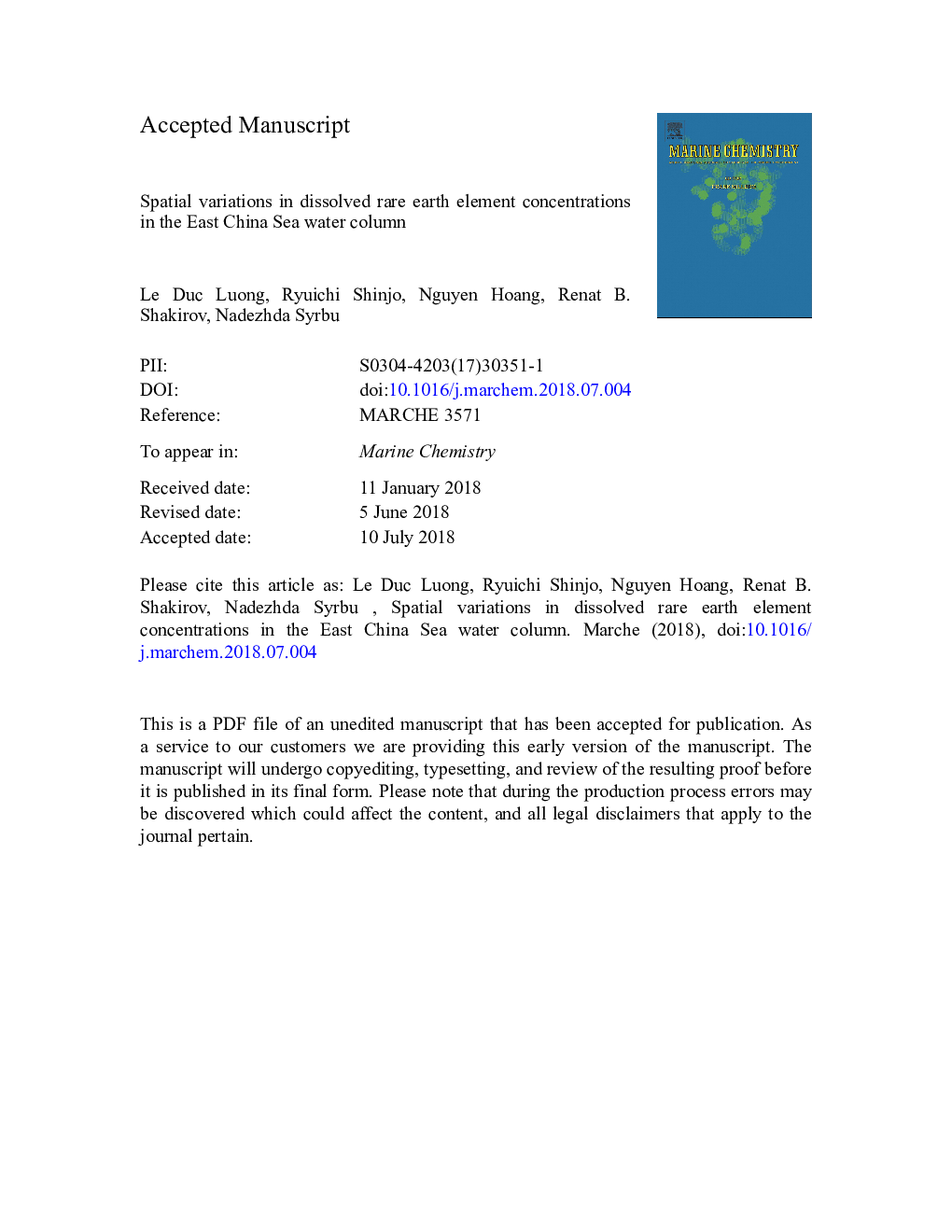| Article ID | Journal | Published Year | Pages | File Type |
|---|---|---|---|---|
| 10154605 | Marine Chemistry | 2018 | 42 Pages |
Abstract
A set of 72 low-volume seawater samples (25â¯mL) collected from 9 stations in the East China Sea in 2009 and 2011 is analyzed for dissolved rare earth element (REE) concentrations. The elemental concentrations in continental shelf waters are markedly higher than those from the shelf slope and Okinawa Trough waters. The transition in the REE concentrations of seawater between the slope and trough is relatively smooth. In the continental shelf, the influences of fluvial input, e.g., from Changjiang River and Yellow River water, and particle scavenging processes on shelf water are significant. The further northern seawater mass in the Okinawa Trough is likely to be more influenced by fluvial input and coastal water masses from the southern Kyushu at the surface then to interact with deep Kuroshio Current water. The Kuroshio Current, along with the vertical geochemical processes, mainly governs the water in the Okinawa Trough. The North Pacific Deep Water (NPDW)-normalized REE patterns of surface and tropical seawaters from the Okinawa Trough, however, exhibit spatial variation from south to north. The intermediate water of the Okinawa Trough is significantly governed by scavenging processes and REE released from lateral transport from the slope along with the movement of the Kuroshio Current. Some sites are also influenced by hydrothermal venting. The interactions between the Kuroshio Current and shelf water masses are also observed, with pronounced evidence of a “turbidity tongue” intrusion from the shelf to the Kuroshio Current and upwelling of the Kuroshio Current to shelf water.
Related Topics
Physical Sciences and Engineering
Chemistry
Chemistry (General)
Authors
Le Duc Luong, Ryuichi Shinjo, Nguyen Hoang, Renat B. Shakirov, Nadezhda Syrbu,
